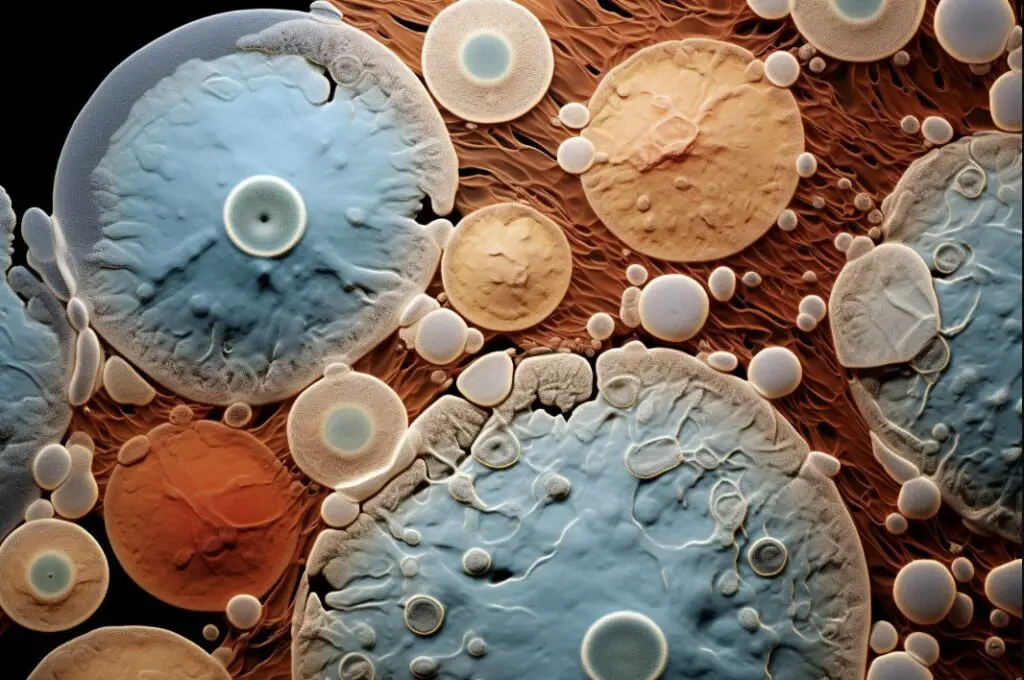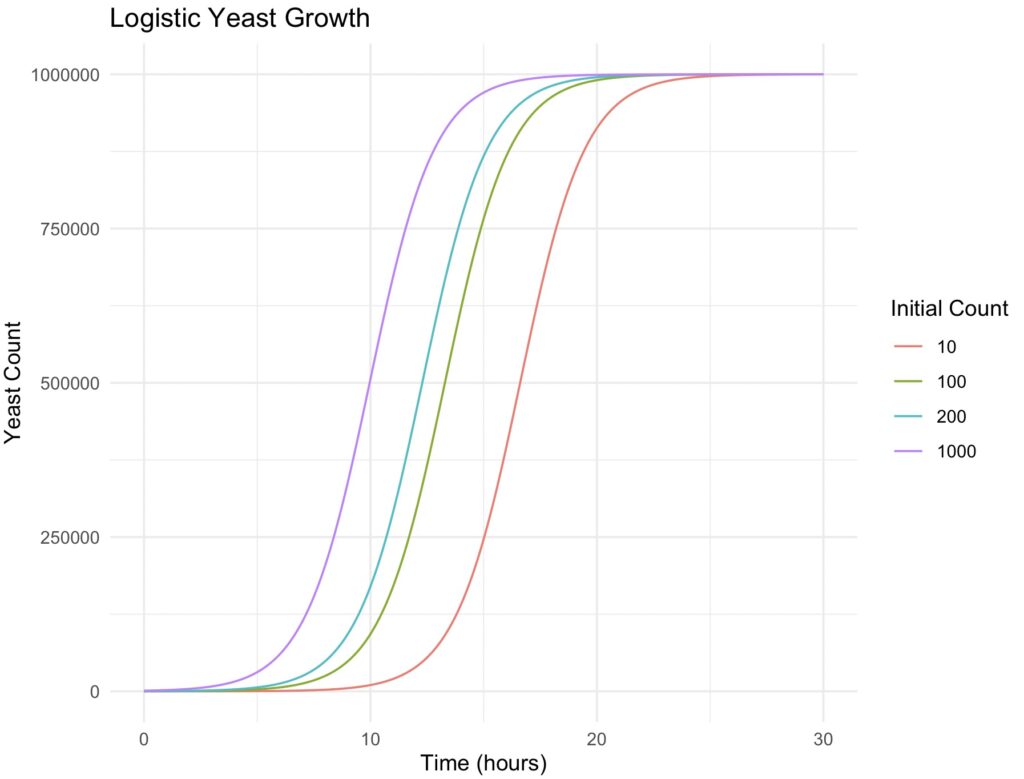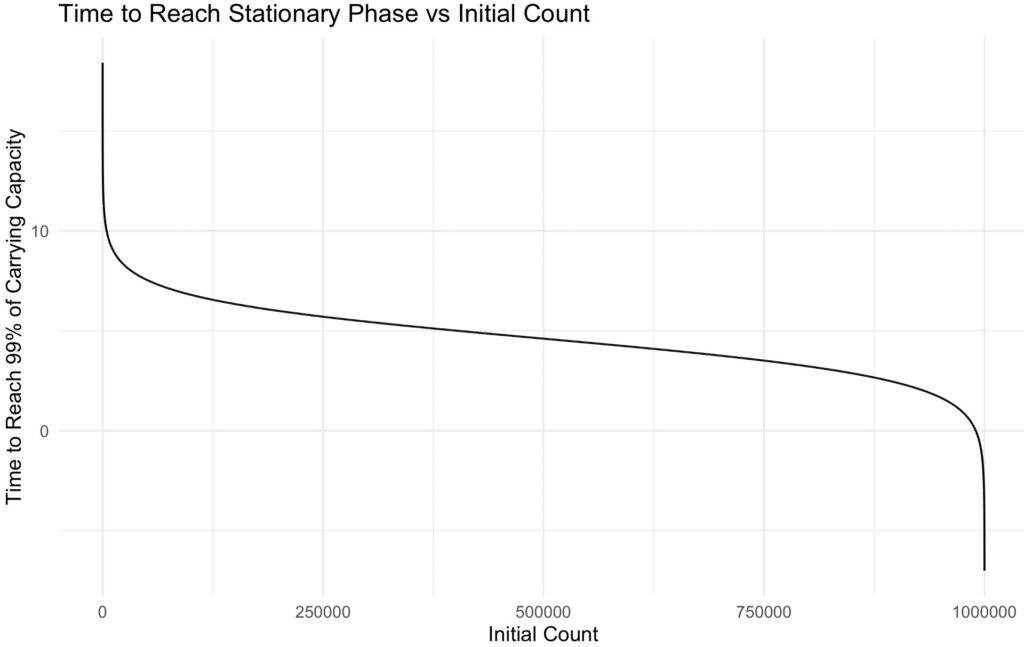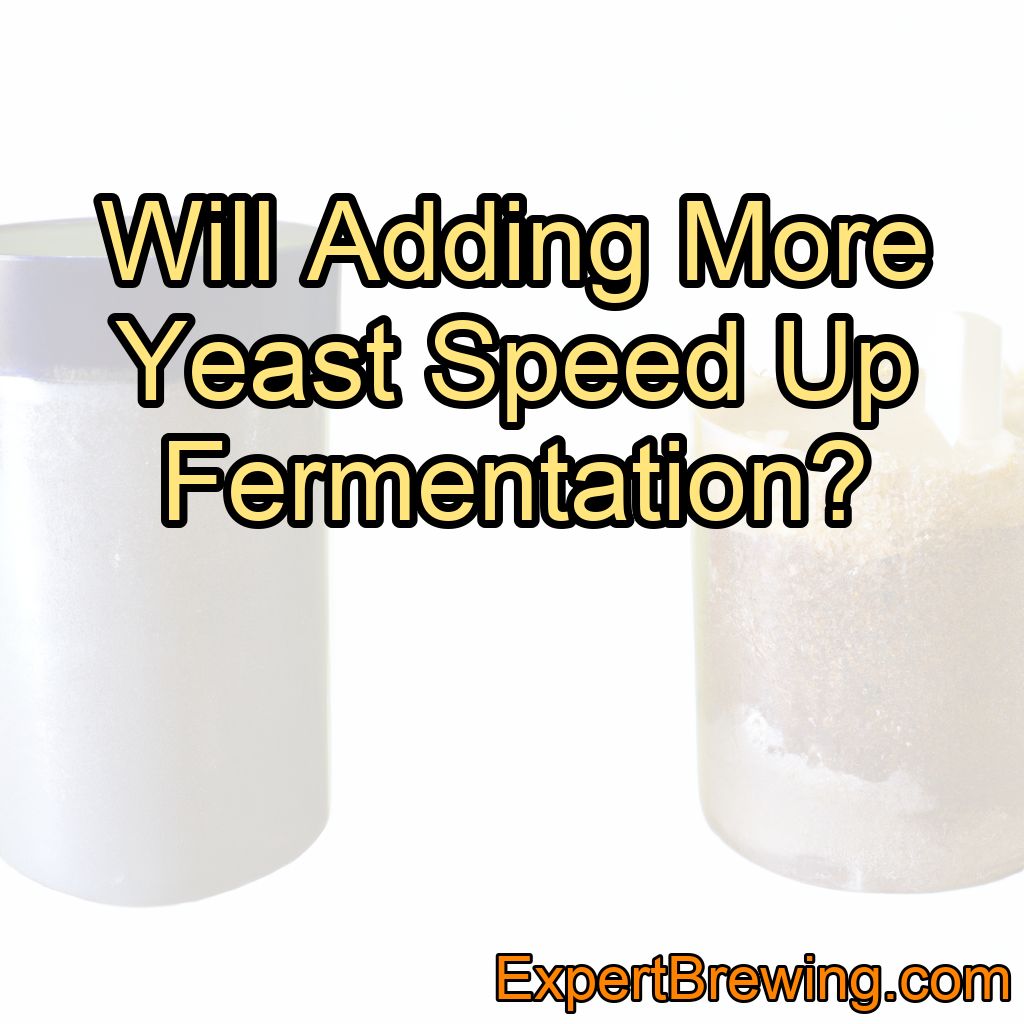As a seasoned brewer, I often get questions about the quantity of yeast to add when brewing. The yeast type certainly matters – but does the amount really matter?
The short, simplified answer is yes, but only to a certain point and not as much as you might think! This is because the growth rate (or doubling time) of the yeast would be the same no matter how much you add.
The process of beer fermentation is a complex one and involves many variables, including the amount of yeast used, but that’s not the only factor. Let’s delve into this topic in more detail.
The Role of Yeast in Fermentation
Yeast is arguably the most important ingredient in beer, cider, mead and wine brewing. It’s responsible for transforming the sugars in the malt into alcohol and carbon dioxide – a process known as fermentation.

The yeast strain used can also impact the flavor and aroma of the beer.
However, the amount of yeast used doesn’t linearly correlate with the speed of fermentation. While more yeast can potentially lead to a faster initial fermentation, there’s a limit to how much it can accelerate this process.
Imagine it like this:
For example, lets say you spent a lot of money on yeast and added an amount corresponding to half the total yeast present at the end of fermentation.
Even if you had only added a 32th of that, it would “just” add another 5 hours to the fermentation, which is not a lot considering the overall time of a few weeks it usually takes!
Yeast Propagation and Beer Fermentation
When yeast is added to the wort, it doesn’t immediately start converting sugars into alcohol. Instead, it goes through a phase called yeast propagation where it consumes oxygen and nutrients to multiply and strengthen. This phase typically lasts 12-36 hours.
Adding more yeast can shorten the propagation phase, but once the yeast starts fermenting, the rate is primarily determined by other factors such as temperature and the availability of sugars.
Exponential growth: The mathematics behind yeast!
Exponential growth is a fundamental concept in biology and mathematics that describes the rapid increase in the population of organisms over time under optimal conditions.
It is often observed in microorganisms like bacteria or yeast, where the population size doubles at regular intervals under certain circumstances. Exponential growth can be characterized by a constant growth rate, which leads to a proportional increase in population size during each time interval.
In the context of yeast growth, the concept of doubling time is crucial. The doubling time is the amount of time it takes for a population to double in size. Exponential growth is often represented by the equation N(t) = N₀ * 2^(t/doubling time), where (N(t)) is the population size at time (t), (N0) is the initial population size, and the doubling time determines the rate of growth.
To take into account the limited amount of nutrients (and therefore eventual growth halt) we use a logistic expression to illustrate how the starting amount of yeast affects fermentation speed:
The logistic growth formula is: N(t) = K / (1 + ((K – N₀) / N₀) * e^(-r * t))
In the formula, N(t) represents the population size at a specific time t. K represents the carrying capacity. N₀ is the initial population size at the beginning. The parameter ‘r’ represents the growth rate.
Plotting the calculations for different starting cell counts “pitching yeast amount” can look like this:

Notice that the slope of each curve is the same! They do however start and end earlier when more cells are present to begin with – but as seen from the purple and red lines, the absolute difference in speed is only a few hours under ideal circumstances when 100X more yeast is added!
Interestingly, when it comes to reaching the stationary phase in yeast growth, the initial population size (start count) does not have a significant impact on the time it takes for the population to transition from the exponential growth phase to the stationary phase.
The stationary phase is characterized by a plateau in population size as the growth rate slows down due to limited resources, waste accumulation, and other factors.
The reason the start count doesn’t greatly affect the time to reach the stationary phase is due to the nature of exponential growth. Since the growth rate is a constant proportion of the population size, a larger starting population will reach the same proportional increase in the same time interval as a smaller starting population.
As a result, the time it takes for both populations to double and eventually reach the stationary phase is similar, regardless of their initial sizes.

However, it’s important to note that while the time to reach the stationary phase might not differ significantly based on initial population size, the absolute population sizes at any given time will be different. Additionally, factors like nutrient availability, environmental conditions, and competition with other organisms can influence the overall growth dynamics and transition to the stationary phase.
In summary, exponential growth is a rapid and predictable increase in population size over time, driven by a constant growth rate. The concept of doubling time is central to understanding exponential growth. While the initial population size doesn’t have a significant impact on the time it takes to reach the stationary phase, it does affect the absolute population size at any given point in time.
Understanding Yeast Pitching Rates
The term brewers use for the amount of yeast added to the wort is the ‘pitching rate’. A standard pitching rate for ale is 0.75 million cells per milliliter per degree Plato, while for lagers it’s 1.5 million cells.
Doubling the pitching rate can potentially reduce the fermentation time by 20-30%, but beyond that, the returns diminish rapidly. Overpitching can even lead to off-flavors and other issues.
The Effects of Temperature on Fermentation Speed
Temperature is another critical factor in beer fermentation. Yeast activity is highly temperature-dependent, and each strain has an optimal range where it performs best.
Raising the fermentation temperature can increase the yeast activity and speed up fermentation. However, this can also lead to the production of unwanted off-flavors. Therefore, controlling the fermentation temperature is crucial for achieving a well-balanced beer.
The Potential Downsides of Overpitching Yeast
While adding more yeast can accelerate fermentation to some extent, overpitching can also have negative effects. It can lead to a lack of yeast growth, which can result in fewer flavor compounds being produced.
Moreover, overpitching can cause the yeast to consume the available nutrients too quickly, leading to a stressed yeast population and potential off-flavors.
Using High Gravity Yeast Strains
When brewing high gravity beers, using a yeast strain specifically designed for such conditions can be more effective than simply adding more yeast.
These strains are bred to handle high sugar and alcohol concentrations and can ferment more quickly and efficiently.
High gravity yeast strains can significantly speed up the fermentation of strong beers, providing a better alternative to overpitching.
Conclusion
So, will adding more yeast speed up beer fermentation? Yes, but only to a certain extent, and not as much as you might think. Yeast pitching rates, temperature control, and the use of appropriate yeast strains all play a crucial role in the fermentation process. Overpitching can lead to various issues, including off-flavors and a lack of yeast growth.
Here are ten key facts to remember:
– Yeast converts sugars in the malt into alcohol and carbon dioxide.
- More yeast can lead to a faster initial fermentation, but the returns diminish rapidly.
– Pitching rate is the term used for the amount of yeast added to the wort.
- Doubling the pitching rate can reduce fermentation time by 20-30%.
– Temperature greatly affects the speed of fermentation.
- Overpitching can lead to off-flavors and other issues.
– Yeast goes through a propagation phase before fermenting the sugars.
- The optimal pitching rate varies between ales and lagers.
– High gravity yeast strains can handle high sugar concentrations more efficiently.
- Overpitching can result in a stressed yeast population.
In my personal experience, achieving the right balance in yeast pitching and temperature control is the key to a successful fermentation. More yeast can offer a quick fix, but it’s not a silver bullet. The complexity of brewing is what makes it both a science and an art.
FAQs
Will adding more yeast speed up fermentation?
Yes, adding more yeast will speed up fermentation.
Will more yeast ferment faster?
Yes, more yeast will ferment faster.
Can I add more yeast to my fermentation?
Yes, you can add more yeast to your fermentation.
How do you make yeast ferment faster?
To speed up yeast fermentation, you can try a few methods. Firstly, make sure the yeast is active and healthy by using fresh yeast or activating dry yeast in warm water with a bit of sugar. Secondly, provide an optimal environment by maintaining a warm temperature (around 80-90°F) and ensuring the dough or liquid containing yeast is not too cold. Additionally, adding a small amount of sugar can help feed the yeast and promote faster fermentation. Finally, you can consider using a commercial yeast enhancer or dough conditioner, which can accelerate fermentation.
How can I speed up the fermentation of beer?
To speed up the fermentation of beer, you can try a few methods. Firstly, make sure your yeast is healthy and active by using a sufficient amount and ensuring proper hydration. Maintaining an optimal fermentation temperature, usually around 65-75°F (18-24°C), can also help accelerate the process. Additionally, providing enough oxygen during the initial stages of fermentation and ensuring good yeast nutrient levels can promote faster fermentation. Lastly, consider using a more attenuative yeast strain, which ferments more quickly, or adding certain enzymes to enhance the breakdown of complex sugars.




